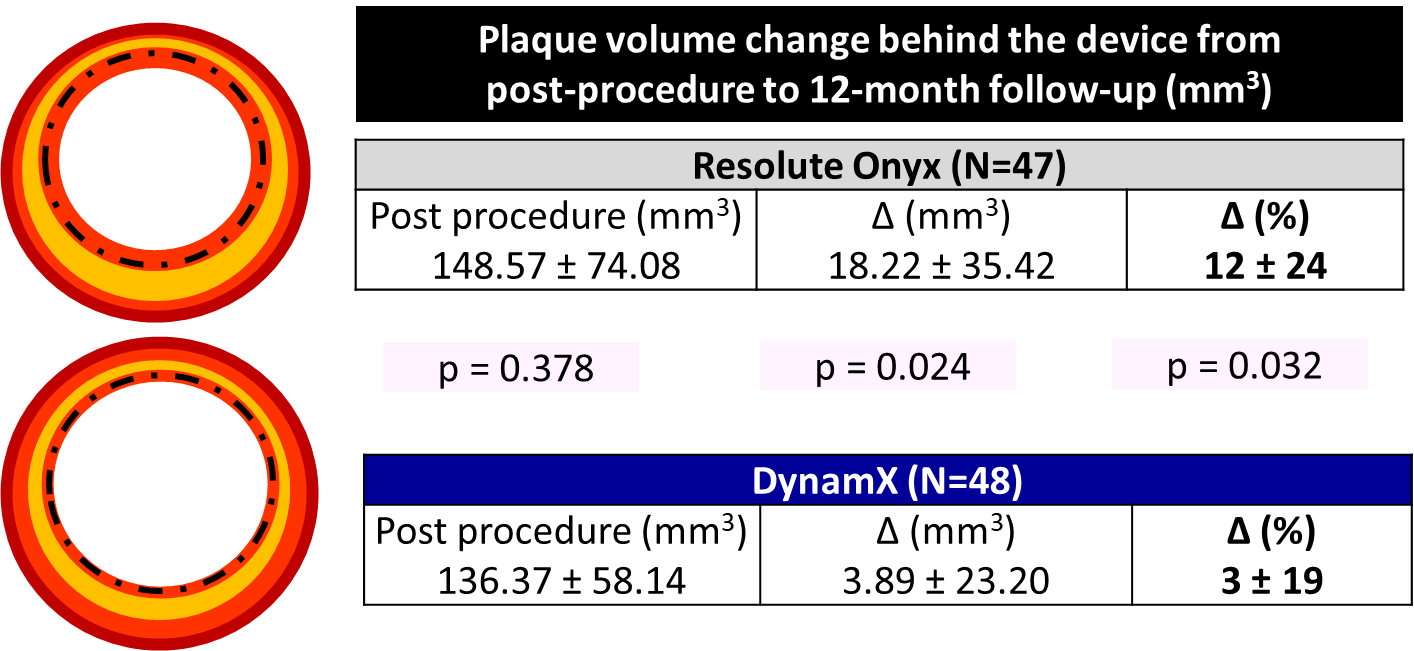Bioadaptive bioadaptors
What are bioadaptors?
Drug eluting stents effectively open clogged arteries and restore blood flow but are rigid devices that prevent arteries from moving and functioning normally. Stent rigidity also prevents the artery from expanding over time, causing blood flow to decrease as the vessel re-narrows. Preventing natural artery motion and function can also diminish the effectiveness of lipid-lowering medications where stents are placed.
Bioadaptors open the artery and restore blood flow, just like a drug-eluting stent, while the coronary artery heals. Over six months, a bioresorbable coating (similar to dissolving sutures) on the bioadaptor resorbs. Unlike drug-eluting stents, this permits the bioadaptor to unlock and move with the natural motion of the artery wall in response to the needs for more oxygen and increased blood flow demanded by the heart (such as during exercise) and to gradually expand with the artery to accommodate new plaque buildup, maintaining the diameter of the treated area for good blood flow over time. Allowing coronary arteries to move and function more naturally in combination with taking lipid-lowering drugs has also been shown to stabilize, and even decrease, plaque volume in the treated section of the artery.
Bioadaptors:
Immediately open clogged arteries to restore blood flow and release a medication to control tissue growth during the healing period
the polymer that holds the three metal parts of the device together resorbs over six months and the bioadaptor unlocks, releasing the vessel to move naturally
Continued dynamic support of the vessel is provided after the device unlocks
Releasing the vessel to move and function more naturally allows for the return of artery pulsatility, as confirmed by intravascular ultrasound imaging, and associated increased blood flow with every heartbeat. The natural ability of the artery to expand in response to new tissue growth and disease progression to maintain good blood flow over time is also restored as confirmed by stable, and even increasing, artery lumen area.
Thanks to the loss of vessel caging the bioadaptor allows transmission of pulsatility to the vessel with a 14% increase in lumen area from systole to diastole.
A Unique Novel finding is the regression of plaque volume behind the bioadpator. This fact does not accour after having implanted a metal drug-eluting stent. This finding will be tested in a prospective dedicated study.
Materials
Three thin cobalt-chromium helical sinusoid strands provide strength to achieve immediate lumen area gain and restore blood flow and then continued dynamic support following bioadaptor unlocking after 6 months
PLGA bioresorbable topcoat contains ‘limus antiproliferative drug designed to elute over 3 months to control growth of tissue during the healing period
PLLA bioresorbable polymer basecoat resorbs over six months to unlock rows of uncaging elements along the length of the device, unlocking the bioadaptor and allowing for restoration of artery motion and function
Studies
Bioadaptors are supported by clinical studies that confirm the safety and unique mechanism of action resulting in superior clinical outcomes.
The first was a mechanistic study that confirmed the excellent safety of bioadaptors at each reporting period (per study protocol annually to 36 months). It also showed the first in-human evidence for bioadaptors to restore artery pulsatility, ability to dilate, and expansion capability in response to treated area tissue growth (positive adaptive remodeling) to maintain the in-device lumen area.
Subsequently the first randomized controlled trial comparing a drug-eluting bioadaptor with a drug-eluting stent was completed and resulted in the first randomized controlled trial data that show superiority of a PCI-device compared to contemporary drug-eluting stent.
The primary endpoint of target lesion failure non-inferiority to the drug-eluting stent was met. Acute performance between the devices was not different.
The study showed superior effectiveness of the bioadaptor over the drug-eluting stent for endpoints such as in-device late lumen loss and restored compliance and cyclic pulsatility. These findings support the bioadaptor design to restore vessel expansion in response to tissue growth and disease progression (positive adaptive remodeling) and ability of the artery to respond to increased blood flow need with every heartbeat.
What are the advantages of bioadaptors over drug-eluting stents?
Bioadaptors:
Allow vessels to move and function more naturally which are important factors for long-term artery health and continued good blood flow
Why we chose the DynamX bioadaptor
The DynamX bioadaptor (Elixir Medical, Milpitas, CA, USA) was shown to be safe and effective for the treatment of coronary artery disease in a randomized controlled trial, building on the long-term device safety and findings of restoration of motion and function reported from the mechanistic clinical study. The randomized controlled trial not only showed acute performance and safety equivalent to a contemporary drug-eluting stent, but it also showed superiority in restoring artery motion and function.



